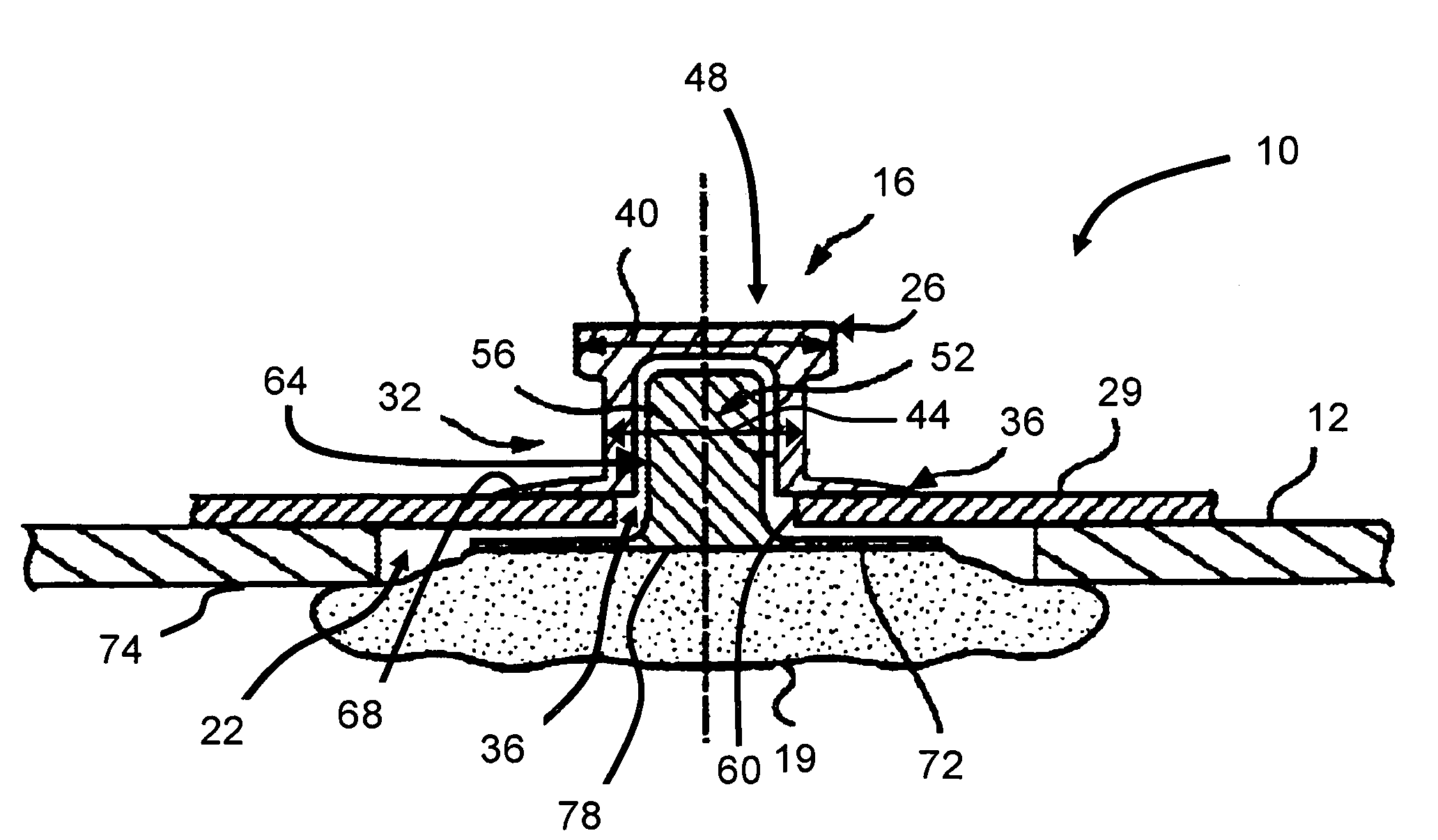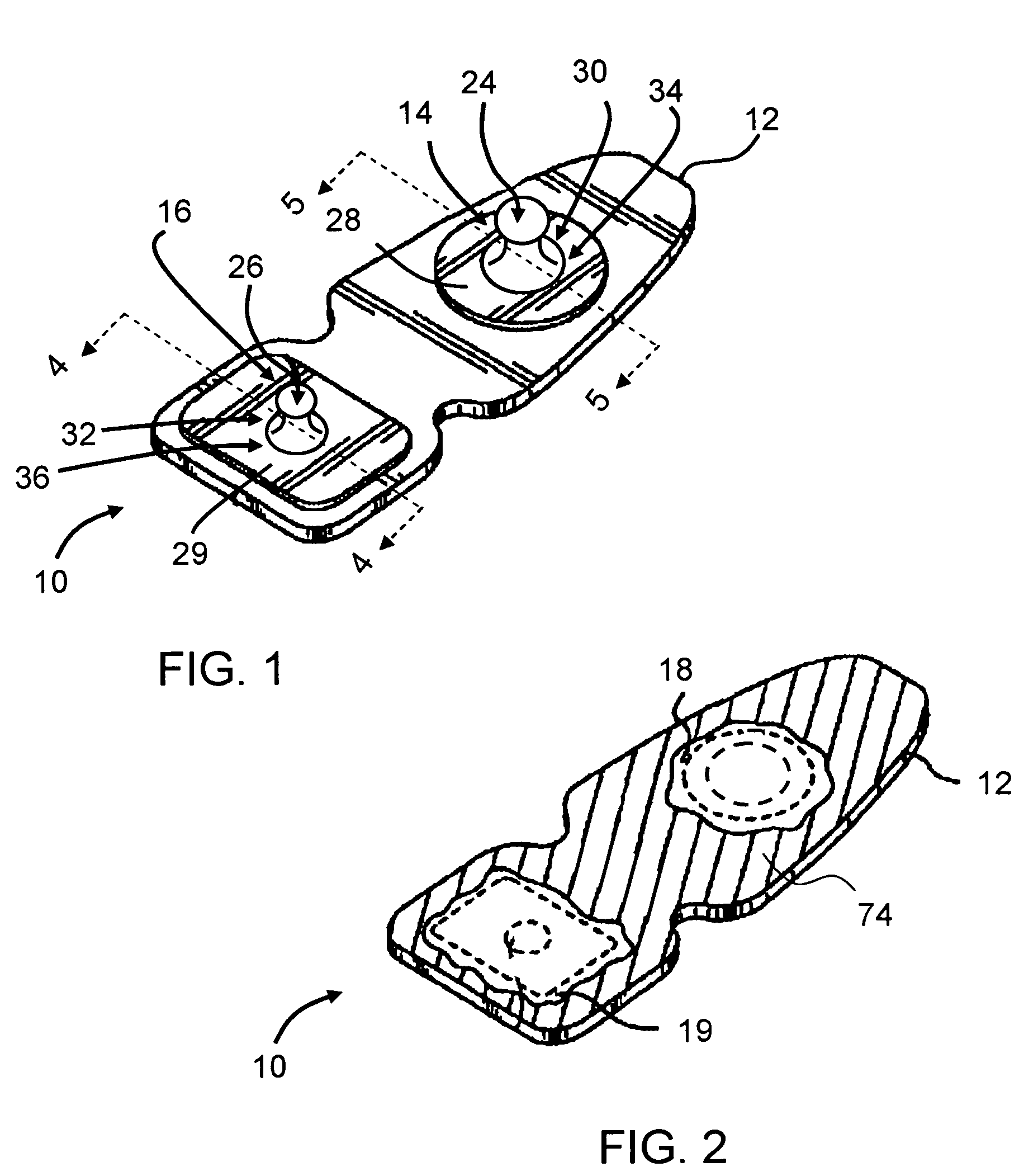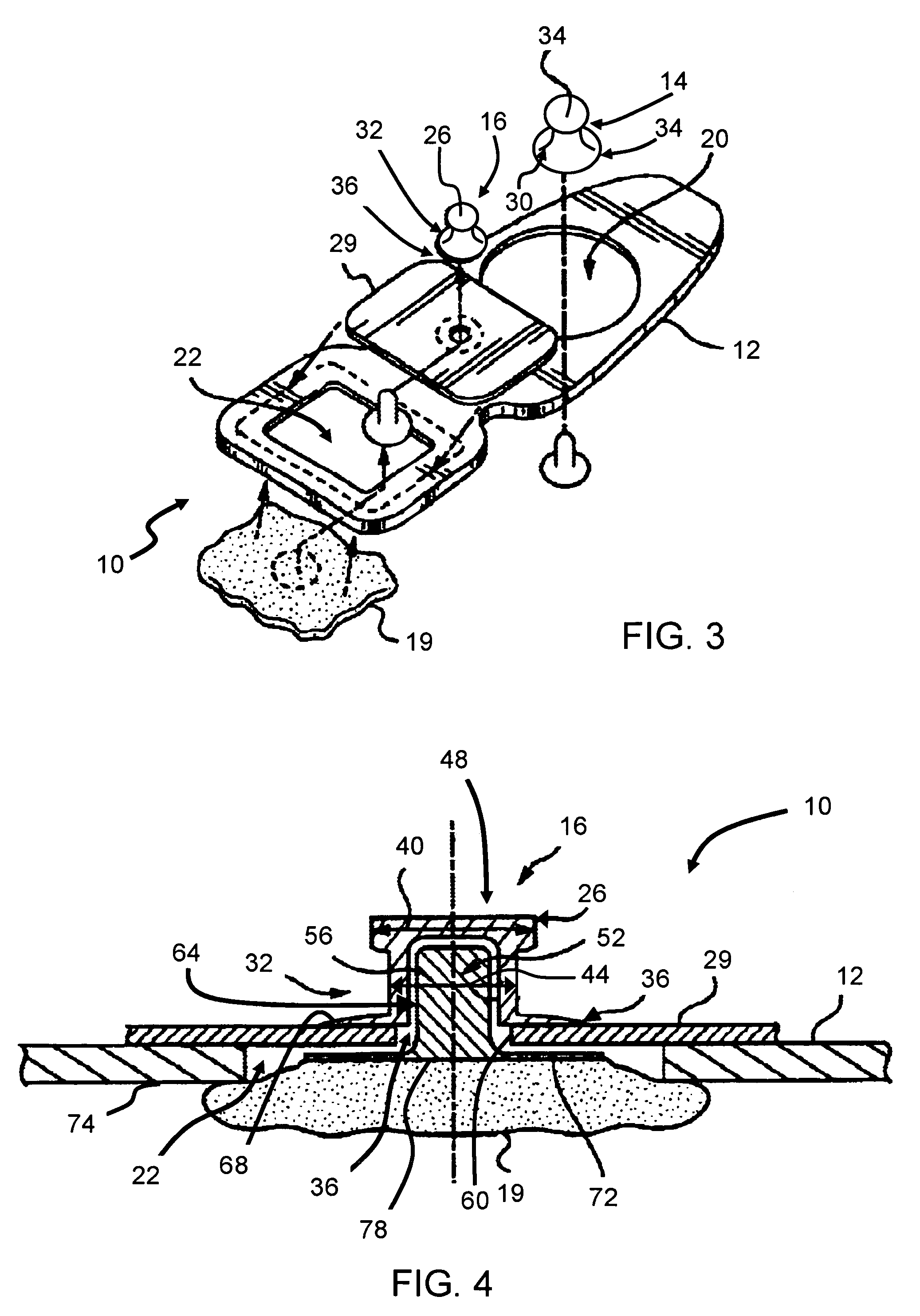Methods and apparatus for conducting electrical current
a technology of electrical current and conductor, applied in the field of biomedical analysis, can solve the problems of mismanagement of living subjects, and reducing the accuracy of the determined cardiac output, so as to facilitate the electrical coupling of the terminal and facilitate the retention of the terminal
- Summary
- Abstract
- Description
- Claims
- Application Information
AI Technical Summary
Benefits of technology
Problems solved by technology
Method used
Image
Examples
Embodiment Construction
[0023]FIG. 1 is a top perspective view of an exemplary embodiment of an electrode assembly 10 for use with a living subject (not shown in FIG. 1). FIG. 2 is a bottom perspective view of electrode assembly 10. FIG. 3 is a partial exploded perspective view of electrode assembly 10. FIG. 4 is a cross-sectional view of a portion of electrode assembly 10 taken along line 4-4 (shown in FIG. 1). FIG. 5 is a cross-sectional view of a portion of electrode assembly 10 taken along line 5-5 (shown in FIG. 1). Electrode assembly 10 generally includes a substrate 12, a plurality of terminals 14 and 16 for conducting electrical current, and a plurality of electrolytic elements 18 and 19. Although only two terminals 14 and 16 are illustrated, electrode assembly 10 may include any number of terminals. As will be describe in more detail below, terminals 14 and 16 are sized differently to facilitate coupling of components to terminals 14 and / or 16 in the correct orientation. More specifically, because...
PUM
 Login to View More
Login to View More Abstract
Description
Claims
Application Information
 Login to View More
Login to View More - R&D
- Intellectual Property
- Life Sciences
- Materials
- Tech Scout
- Unparalleled Data Quality
- Higher Quality Content
- 60% Fewer Hallucinations
Browse by: Latest US Patents, China's latest patents, Technical Efficacy Thesaurus, Application Domain, Technology Topic, Popular Technical Reports.
© 2025 PatSnap. All rights reserved.Legal|Privacy policy|Modern Slavery Act Transparency Statement|Sitemap|About US| Contact US: help@patsnap.com



